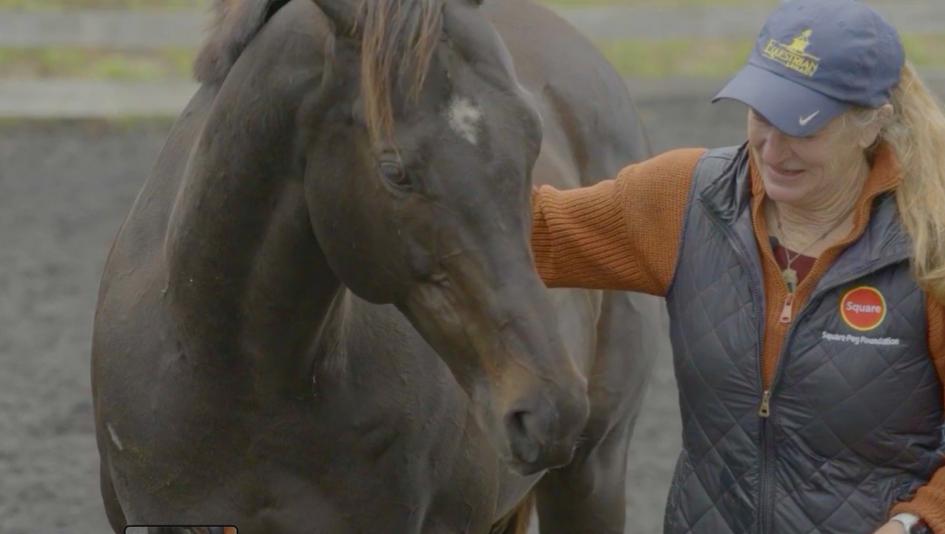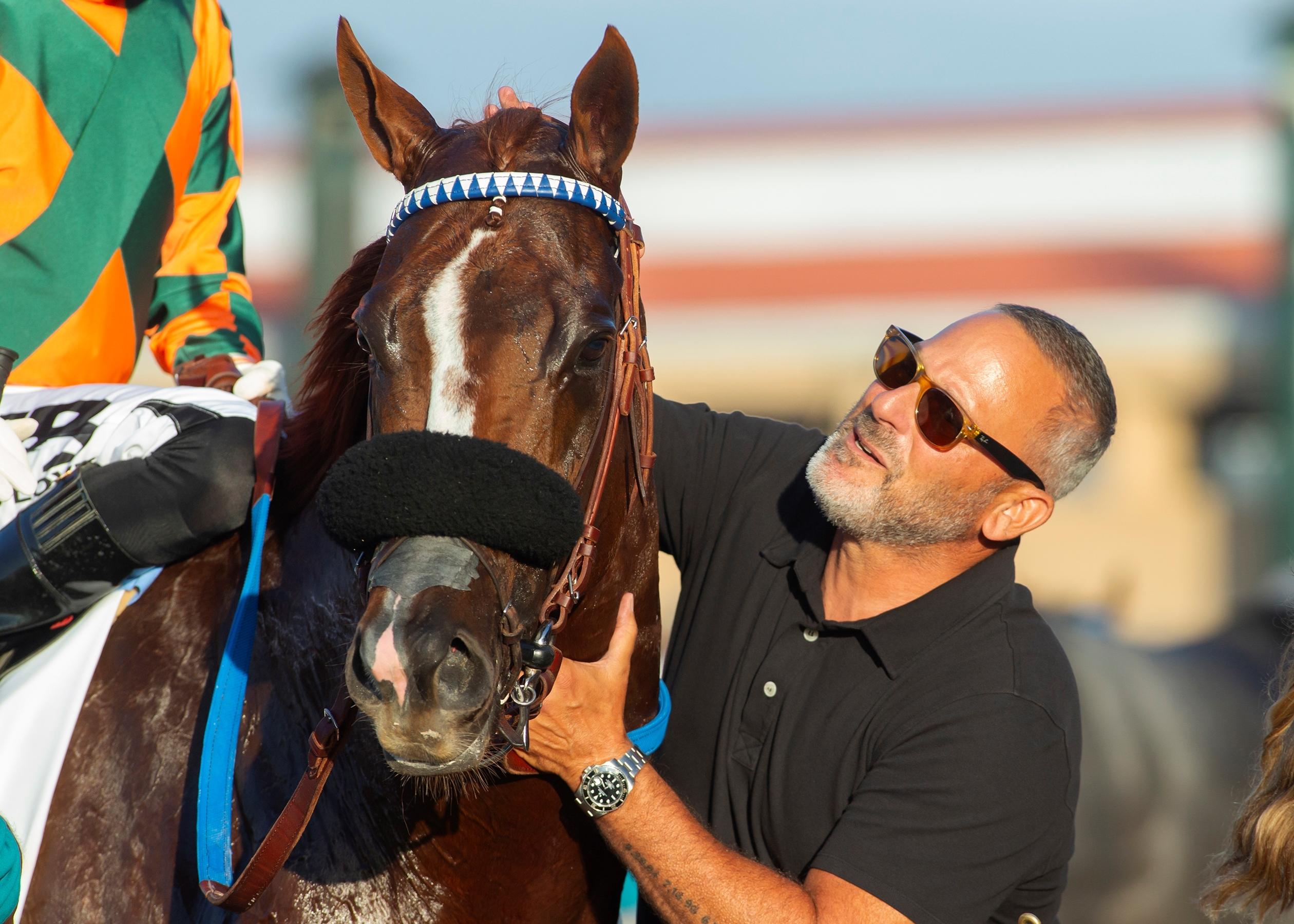
Landaluce: Unforgettable Brilliance, Unimaginable Heartbreak

When it comes to horses, even the most cynical of souls has a hard time not falling for the large eyes and dynamic ears of a Thoroughbred. We are captivated by their hearts on the track and their personalities off of it, their faces as familiar to us as those of family and friends. They become a part of our racing lives and their welfare beyond their time in racing matters to us all. Enter organizations like California Retirement Management Account, or CARMA.
Founded in 2007, CARMA has become the Golden State’s go-to for Thoroughbreds exiting the racetrack, their activism bringing much-needed awareness and funding for aftercare in California.
“I’m going to be honest with you: I can’t even remember. It’s been so long. I always knew it was important,” Billy Koch, CARMA President, observed when asked about his involvement with aftercare.
Not only has Koch been involved with CARMA since its inception, but he has also made the post-racing welfare of horses part of Little Red Feather (LRF), the syndicate that he founded with partner Gary Fenton.
“Before we had CARMA and LRF Cares and all these other great organizations, we would be responsible and find homes for our horses,” Koch continued. “That’s just what you did as an owner.”
That perspective informed the origins of the California-based organization. When longtime breeder and owner Madeline Auerbach wanted to retire her stakes-winning gelding Lennyfromalibu in 2005, she realized that resources for retiring horses like him were hard to come by. That experience led her to found CARMA, a 501(c)(3) nonprofit that provides funding for racehorse aftercare. Koch, Auerbach, retired turf writer Jay Privman, and others work to raise money to provide grants for rehabilitation, retraining, and retirement.
Their funds come primarily from two sources: fundraisers and purse contributions.
Lucinda Lovitt, CARMA’s executive director, explained: “We get three-tenths of 1% of purses earned that participate in the CARMA program and we have about 80% participation from owners, trainers, and jockeys. That program provides our sustained funding, and we fundraise the rest.”
From 2007 through 2019, CARMA held in-person events to bring in additional funds.
“Our main fundraiser for the year was a party in the paddock at Del Mar. Before that, we had poker tournaments,” Koch said. “We had all these events, and they were all great. And then during COVID, we were like, ‘Uh-oh, how do we do this now?’ ”
That’s when Koch pitched a different kind of fundraiser: “I said, remember how Jerry Lewis used to have those telethons? What if we did a CARMAthon? We could do it with help from TVG, who’s now FanDuel TV. We could have people donate online. But we celebrate the horses on one particular day, and we do it through our website and we’ll make it a fun thing that’ll be on TV during that day.”
With that, CARMAthon was born. This annual televised event has become the organization’s biggest fundraiser alongside purse contributions.

“It was a smash success,” Koch remembered.
That success has prompted CARMA to continue holding this unique fundraiser.
“We just found that this was a really great way for our organization to capture more donor dollars, and also spread our message,” Lovitt said, “because we are able to leverage our partnership with FanDuel to reach a much wider audience than we would with an in-person event hosted in Southern California.”
The success of this annual event “is really about creating buzz around it. So we start planning in January, and we come up with a theme, a way for us to visually capture that year’s event,” Lovitt said. “We’ve done all different kinds of things. One year, all of our visuals were versions of California license plates. Another year, we had a sports theme where we branded it as Team CARMA: it had a football-ish look to it, with jerseys, and goal posts, and a football field.”
With a theme of New Beginnings, this year’s edition once again gave the organization the chance to highlight aftercare and show what organizations like CARMA do for the sport. Partnering again with FanDuel TV, the Aug. 16 CARMAthon connected Hollywood-style promotion with video features that highlighted the works that this nonprofit and its partners do and reinforced the sport’s responsibility to support the aftercare of its athletes. Their efforts raised nearly $200,000, money that is earmarked for programs for retiring Thoroughbreds in California as well as the funds necessary to run this 501(c)(3).
“That amount, $200,000, is significant because it’s going to allow us to give away more money than just the amount we’re raising through our purse contribution program,” Lovitt explained.
In addition to CARMAthon and purse contributions, Koch, Lovitt, and the CARMA team worked with Privman on “What Horses Do After Racing: The Story of Good Carma,” a children’s book that follows four horses – Good Carma, Stylish Samantha, Lovely Lucinda, and Silly Billy – as they dream of what is next after their racing careers are over. One of six semi-finalists for the prestigious Dr. Tony Ryan Book Award, the book “was such a labor of love for our team,” Lovitt shared. “It was really, truly one of those legacy projects that I just was so thrilled to be a part of. Such a sweet, wonderful book. And Jay is an amazing author and has been such an invaluable part of our board.”
For Koch, the hard work that the organization puts into its fundraising and awareness efforts goes to support the aftercare efforts of partners who “are doing it out of the goodness of their hearts. It’s not like they’re making a huge living, taking care of these horses at their farms. We’re really blessed because we’re in a community here in California where people know who we are and use us to assist them.”
Since its inception, CARMA has been part of the sport’s efforts to address what happens to these equine athletes after their racing days are done.
“We have clearly come a long, long way since 2007, when aftercare wasn’t even a word,” Lovitt observed.
“What has happened over the last 15 years is really the creation of another subset of our industry. We now have an industry within an industry. We’ve got 84 [Thoroughbred Aftercare Alliance]-accredited organizations in North America. We have nationally recognized events like the Thoroughbred Makeover, the Retired Racehorse Project, and more. We have definitely expanded the idea of aftercare, and these horses doing something post-racing is a part of the national conversation, where it wasn’t before. I think that’s a really positive and meaningful accomplishment, but I also think that we have a long way to go.”
The love of the horse fuels the love of the sport for many an owner, trainer, breeder, fan, and more, and organizations like CARMA work to ensure that these beloved animals have a soft landing place once their time on the racetrack is done. Fundraisers like CARMAthon help everyone give a little to do a lot as our awareness of what happens at the end of each horse’s racing days.
“It’s really amazing how the importance of aftercare has jumped, risen to the level that it has in our world now,” Koch reflected. “As more and more people understand just how important it is and how we really do make a difference, it makes our sport better.”